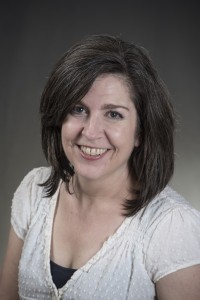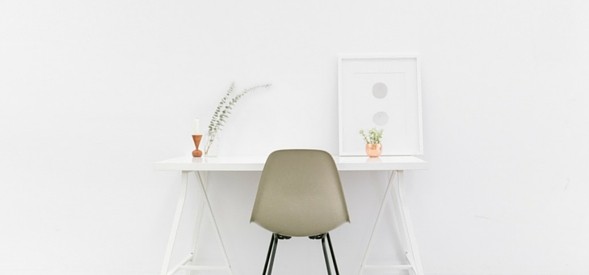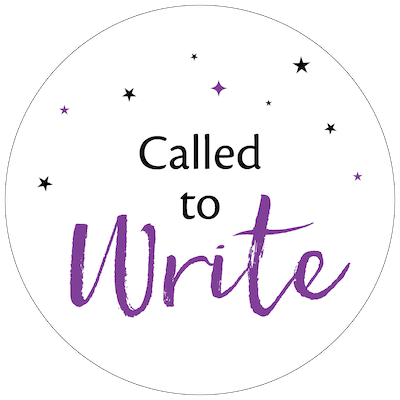A while back I wrote a post called, “Today is the perfect day to clean your writing desk.”
 In that post, I mentioned one of my pals and an amazing organizer, Miriam Ortiz y Pino. Just thinking of her inspired me to ask her to write a guest post for us about organizing our writing spaces.
In that post, I mentioned one of my pals and an amazing organizer, Miriam Ortiz y Pino. Just thinking of her inspired me to ask her to write a guest post for us about organizing our writing spaces.
Miriam and I go way back. We met in a coaching program we were both participating in during 2009. I later hired Miriam to help me reorganize my office — virtually! We did the work remotely, by phone, after I sent her digital photos of my messy space. I’m happy to say that even though there are moments where the surface clutter still happens, underneath my office has remained well-organized, thanks to my work with her.
Check out her wisdom in today’s post about “defining” our physical space for writing in five, simple steps.
![]()
Defining Space for Writing
Guest post by Miriam Ortiz y Pino
Clarity boosts creativity.
Want to write more, or better? Clear some space.
We all need a little space and time to get things done. Around the web, there has been a lot written about how to find the time for doing the writing, and a bit of idea-sharing for decorating a writing space, but I want to talk about defining a space for the doing.
For anything to happen, whether it is work or play, creativity or drudgery, there must be a space to do it in.
You can’t turn cartwheels in a room full of things you haven’t found a place for. Room for doing and creating happens if everything is put away in the place it belongs, save the items necessary for the task at hand.
In other words, an area for the doing must be defined.
Once defined, a space has an identity and a purpose. Things are much more likely to happen in a space that has been given a purpose.
Here are five steps to help you define your writing space.
Step 1. To start with: WHERE do you write?
The actual location isn’t important, the naming and claiming of it is. It might be the kitchen counter, the home office, or the table at your favorite coffee shop.
Know where you will write.
This way, when the time comes every day, you won’t waste energy or decision juice deciding where to go to do the writing.
Step 2. What do you need to write?
Now that you know where, think about WHAT you need to write. The tools that make it easier for you to accomplish the writing.
Are you a pad-and-pencil kind of writer? Or do you work better with a pen?
If you work on the computer, do you really need 12 notebooks lingering around the space? Would one for notes to check on work?
Step 3. Reverse-engineer what to keep in your writing space.
Then, reverse-engineer what to keep in the general area.
A desk, chair, cup of coffee, computer can stay. Remove anything that is not directly related to your writing. Move these items out or to the periphery.
An important note about decorations: There is a fine line between inspiration and distraction when it comes to decoration in a creative space. Keep the inspiration on the desk to a minimum and rotate it frequently or else it becomes clutter. Hang the super inspirational stuff on the wall and honor it with a frame.
Starting with a clear writing area lets you get right to the writing. If you have to move a bunch of stuff around just to get started it can take you up to 40 minutes to regain your focus. That seems like a waste of time. You could have been spewing words onto the page!
Step 4. Keep your space clear enough to write.
To keep the area clear enough to write, have a place for ALL the things that pile up to go.
Taking the time to define the spots now saves lots of time later.
Here are some specific suggestions for the typical stuff that clutters up a workspace.
- Have a place for your writing-related things. Are there things that are related to writing that pile up on your desk? Make sure there is a place for them to go. All you need to do is say it out loud and set the thing there. “This top desk drawer will be where the sticky notes live. And this pencil cup will keep my pen and highlighter safe and handy.” Now you know.
- Have a defined space for your ideas. Jenna has written about how to decide what to work on next. She suggested some criteria for choosing the next best thing and mentioned the idea of having a safe place to keep your inklings and ideas until you are ready to flesh them out. And I like it. It’s what I call a defined space for your ideas to reside. Clever, right? ;)
So create a space to house your ideas for future projects. A notebook, document, bin, folder, or drawer will work. I had one client that used a crystal punch bowl and put the ideas on index cards and dropped them in.
- And while you are at it, have a place for the other non-writing stuff that comes up too. This can be a separate notebook or document for all the things that require action and flutter through your brain as you work. It will become a parking space. Instead of the thought becoming a distraction, jot a quick note and get back to work. Distribute the thoughts to their proper place after your writing session.
- Have a place for the things that belong elsewhere. Are some of the extra things items that belong somewhere else? Create a holding spot, basket, bag, or box for redistributing these items at the end of the day.
Knowing what to keep in your space, now that it is defined, also becomes easier. There is no need to keep a bag of toiletries in your writing space — or a computer in your bathroom for that matter!
- Make sure to have a giant recycle bin and a bunch of binder clips handy to keep your good ideas together and the decided-against pages out of the way. You don’t have to empty the recycling bin very often – so if you really needed to retrieve something you can for a while.
Step 5. Put your toys away when you’re done.
At the end of the day, return all the items you pulled onto your desk to where they belong. If you are going to continue working with some of them tomorrow, just mark where you left off and stack them up neatly so they are handy when you restart.
It only takes a couple of minutes and that is a lot less than the 40 minutes to refocus. I’m thinking that’s worth it.
The added bonus of defining the space is that it helps keep the clutter pile to a minimum. It’s not clutter if you know what it is for and how you will use it.
Knowing where things go means fewer decisions and that means energy freed up for creativity.
Now, go write something. Then put your toys away.
![]()
Thanks, Miriam!
You might also be interested in checking out the Q&A I did with Miriam called Writers Get Organized.
![]()
 About Miriam: Miriam Ortiz y Pino is a Certified Professional Organizer and Simplicity Expert. She helps her clients ensure that what needs doing gets done.
About Miriam: Miriam Ortiz y Pino is a Certified Professional Organizer and Simplicity Expert. She helps her clients ensure that what needs doing gets done.
Miriam specializes in creating simple systems that are easy to implement and work FOR you, instead of you working a system.
Whether you’re struggling to organize your life, declutter your home, manage your time, get control of your papers, or just feel overwhelmed and frustrated with all your stuff, Miriam will work with you to create the environment you need to live your best life.
Find Miriam online at http://morethanorganized.net.
[et_bloom_inline optin_id=optin_1]


